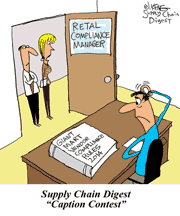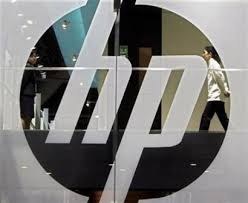 |
May 22, 2014 - Supply Chain Flagship Newsletter |
 |
| THIS WEEK'S SPONSOR: GENPACT |
 |
|
 |
|
||||||||||||||||||||||||||||||||||||||||||||||||||||||||||||||||||||||||||||
Trip Report: Gartner Supply Chain Conference 2014
|
|||||||||||||||||||||||||||||||||||||||||||||||||||||||||||||||||||||||||||||
| GILMORE SAYS: |
"Colgate's Topping worries a "perfect storm" of factors could lead to a dramatic shortage of supply chain talent in the next decade." WHAT DO YOU SAY? |
The official theme was "Leading for the Next Decade," in the context of what supply chain will need to do to adapt and compete over the next 10 years. But more generally, the key themes of the presentations from both Gartner analysts and external speakers I think were as follows:
• The growth and importance of supply chain segmentation
• The rise of supply chain as a real driver of revenue growth
• The confluence of digital supply chains, the Internet of Things, sensors. etc., and how this will drive new offerings by many manufacturers that combine physical products with software and services.
• The rapid rise of advanced analytics
• The supply chain talent management imperative, and as a sub-theme to that, recognizing that millennials really are different
In addition, as never before (and maybe almost to the point of excess), Gartner really is pushing its various diagnostics and toolkits, which all sort of emanate from its now five-level demand-driven value network maturity model. Gartner appears to be successfully using these frameworks as a way to more directly engage its corporate clients, and if you do so, that naturally enhances your shot at a keynote event at the executive conference (see Schneider Electric, 3M).
Given the amount of material, I will summarize this year's keynote presentations this week, and then do the same for the breakout sessions next week. Even my keynote summaries in most cases will hardly do justice to the full presentation, but instead I hope to note especially interesting or insightful comments from each.
Gartner analysts Noha Tahomy and Debra Hofman opened things on Tuesday by first noting the dramatic changes we have seen in supply chain over just the past decade (and it is quite remarkable), naturally setting the stage for pondering what the key forces will be moving forward.
They noted that the number of supply chain undergraduates in US students has grown 70% since 2011 - I had no idea the increase was of that magnitude - yet virtually all of them are finding jobs when they are finished, such is the demand.
On the blurring of the physical and digital in supply chains, they noted that many companies are adding a software component to physical products to either enhance their value or sell additional devices. An easy example being GE's aircraft engines, to which now added dozens of connected sensors, that produce data that GE mines and sells to airlines to improve their maintenance operations.
Some 10 years ago, I remember the then CEO of automotive and electrical component giant Eaton saying the company would no longer sell any products that didn't have a chip in them. Kimberly Clark now markets a diaper with a sensor that detects moisture, sending a smart phone alert when a change is needed, in an interesting example of real-time demand sensing.
As this product transformation occurs, a key question, of course, becomes who owns the product development and delivery? Does supply chain just own the physical product, and IT or marketing the software and services side? Or will supply chain in many cases be given responsibility for the whole thing?
Regardless of how that plays out, product development and release will clearly be more complicated, and new skills and technologies will have to be added to create, launch, and maintain these new physical-digital hybrid solutions.
Tahomy offered an example of just how automated the coming new supply chain world could be, where a Taylor Swift tweet praising a new ice cream flavor leads to automated sensing of rising demand. Then, as production gets set to ramp up, sensors detect a quality problem on one manufacturing line, leading to machine to machine communications across the company's network, advanced analytics that determine the optimal mitigation plan, and automatic adjustment of orders to suppliers and the rerouting of trucks.
I think the example scenario actually should have been a little less automated, and thus seem more realistic of what we will see anytime soon. That modest vision perhaps might also have been a little less threatening for any middle managers in the audience wondering what they and their teams will be doing when this all automation comes to be. But directionally at least this does appear where we are headed. She could have added driverless trucks.
Linda Topping, chief procurement officer at Colgate-Palmolive, spoke on what she and her company believe could be a true supply chain talent crisis arising before long.
She worries a "perfect storm" of factors could lead to a dramatic shortage of supply chain talent in the next decade. That includes 25% of baby boomers retiring in the next 10 years, millennials with very different views soon becoming the dominant proportion of the global and US workforce, 25% growth in supply chain positions to be filled in the next decade, etc.
Colgate recently realized it had to start work right now to build its next generation supply chain leadership team for 2020, and has been working hard to do just that. Those efforts include programs to ensure that top talent remains with the company and a focus on recruiting more woman and minorities to broaden the pool.
It also involves programs to adapt to what millennials value in a company, "since they aren't going to change, we have to," Topping said.
And just what are millennials looking for, besides the usual hopes for interesting work and growth opportunities? Topping cited socially responsible companies, flat organizations, access to senior leaders, opportunities to regularly express themselves, and opportunities to work from home as examples.
On Wednesday morning, noted business luminary Tom Peters, co-author two decades ago of the seminal book "In Search of Excellence," gave an interesting if somewhat rambling presentation on, I guess you would say, becoming excellent as a company and as a supply chain.
Almost defying a summary, the best I can do is offer some of the most interesting (though often not connected) observations: As supply chains become more integrated, they become more efficient, but that also usually raises a company's supply chain vulnerability scores by a few points - more companies need to recognize that; most companies should have a formal supply chain R&D/innovation budget; cross-functional communication is really more important to success than functional excellence, and there are easy ways to improve that, such just by regularly going to lunch with people from other areas and inviting them to your team meetings; ecommerce is like an election that never ends (that's especially good).
I met Annette Clayton a few years ago when she was previously at Dell. Now she is at Schneider Electric running its giant supply chain. She had an interesting keynote discussion with Gartner's Jane Barrett, but I am going to combine that summary with content from a related breakout presentation next week, focused in part on Schneider's supply chain segmentation efforts.
Chris Holmes from 3M spoke to how in just a few years the company has made major progress in getting control and driving improvements in its sprawling global supply chain, across many disparate businesses. 3M appears to have been able to centralize most supply chain functions even with that business diversity.
Holmes's presentation might be summed up as "Business and supply chain is a battle, and we intend to win," and in fact he used words very similar to that to end his presentation. Sure sounded like he meant it.
Again picking out some key points from an excellent presentation: every demographic group locally and around the globe is likely a customer segment; emerging economies go through stages of evolution in terms of focus as per capita GDP grows - infrastructure, manufacturing, safety, consumerism, healthcare, and 3PL proactively works to have key products for each stage; advanced manufacturing technology "is the center piece of the future of 3M"; don't be confused - lowest total delivered cost is in fact a customer-focused metric, and lowest price usually wins.
My head hurts. I will have some more thoughts on the conference overall as well as the breakout sessions next week.
Any reaction to Gilmore's conference summary, or the key themes he cited? Let us know your thoughts at the Feedback section below.
![]()
| View Web/Printable Version of this Column |
|
|
|
YOUR FEEDBACK
We received a quite a few good letters on our First Thoughts piece on Amazon and Supply Chain Innovation a few weeks ago.
That includes our Feedback of the Week from Thom Moore of Warehouse Optimization, who says most companies believe they are more innovative than they really are. Meanwhile, Bill Alrich says he is not all that impressed with Amazon's innovation.
You'll find those good feedbacks and others letters below.
Feedback of the Week: On Amazon and Supply Chain Innovation
But I think your 50% problem comes into play: 90% of companies think that are in top 10% of innovation. Is it really innovation if there is already a 3 digit acronym for it (like TMS or WMS)? When we introduce the 90% to order optimization - a way to more fully use truck capacity - they have difficulty seeing the very real opportunity. Maybe Amazon and Supply Chain Digest will open a few eyes! Thomas A. Moore |
||
| More on On Amazon and Supply Chain Innovation | ||
Thank you for a great question. Anyone who is willing to implement a new (or innovative) approach in supply chains deserves our gratitude. Success has many fathers. Innovators innovate but without an implementer the innovation may never become real. I love what Amazon is doing. Jeff Bezos deserves a lot of credit and our gratitude for allowing Amazon's decision makers try these innovations and not be driven by greed. FYI: I have no vested relationship with Amazon. Subhash Chowdary |
||
| As always plenty to make me think a little deeper than the norm. Successful innovation is also about timing and hitting the window of opportunity at just the right time. Perhaps some collective dialogue from your readers about how to pick the right time would be useful to all of us who try to innovate whilst not losing touch with the essential basics of good practice. David MacLeod Learn Logistics Limited
|
||
As we sing their praises for supply chain innovation let's not forget the massive tax subsidy that Amazon has enjoyed for 20 years. This NBER study details it: http://papers.nber.org/tmp/51204-w20052.pdf.
I appreciate their thinking but I would still prefer to have a few locally-run stores around. I remember when the neighborhood drugstore would hold packages for pickup by their "regulars." Everything old is new again. Bill Alrich |
SUPPLY CHAIN TRIVIA ANSWER
Q: Which are the six countries ranked in the top 10 for logistics performance in each of the last three bi-annual rankings from the World Bank (Logistics Performance Index)?
A: Germany, Netherlands, Belgium, United Kingdom, Singapore and Japan.
| © SupplyChainDigest™ 2003-2013. All Rights Reserved. SupplyChainDigest PO Box 714 Springboro, Ohio 45066 |
POWERED BY: XDIMENSION
|







